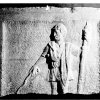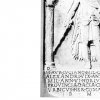crumera
Crucifier of Pixels
Without the body being able to be supported by the legs
The chest cavity will elongate.
With an elongated chest cavity it becomes problematic to breathe out.
With unbroken legs being able to support the body, the crucified can push up and breathe out, removing the stale air from the lungs.
Even if it hurts enormously if the feet are nailed to the cross but the crucified can do this.
With broken legs or even free hanging legs you will suffocate slowly.
It doesn't enhance the torture of the cross just replaces it with the torture of broken legs and slowly suffocating.
Also the trauma of the shattering of the legs can lead to for example heart attacks especialy in a weakened state when someone was allready draing by a long time on the cross
Breaking the legs was done to speed death for what ever reason it was deemed neccesary.
Freeing guards for other important duties or for negating religious taboos.
The chest cavity will elongate.
With an elongated chest cavity it becomes problematic to breathe out.
With unbroken legs being able to support the body, the crucified can push up and breathe out, removing the stale air from the lungs.
Even if it hurts enormously if the feet are nailed to the cross but the crucified can do this.
With broken legs or even free hanging legs you will suffocate slowly.
It doesn't enhance the torture of the cross just replaces it with the torture of broken legs and slowly suffocating.
Also the trauma of the shattering of the legs can lead to for example heart attacks especialy in a weakened state when someone was allready draing by a long time on the cross
Breaking the legs was done to speed death for what ever reason it was deemed neccesary.
Freeing guards for other important duties or for negating religious taboos.















